Near-Greatness & Shenanigans: Bill Clinton & the Unwise Right
Posted By Morris van de Camp On In North American New Right | Comments Disabled6,583 words 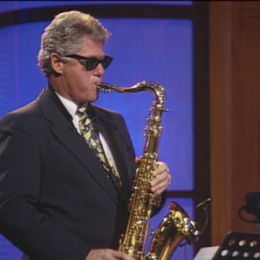
In tyrannies. . . to test the tyrant’s authority was to risk incarceration, torture, and death; in America’s democracy, by contrast, to contest the president’s authority was to win media attention, big book advances, posses of fellow-travelers, and lawyers such as Ken Starr crowding for business and prominence.
— Nigel Hamilton
Bill Clinton’s presidency should be re-assessed from a pro-white point of view. Yes, that Bill Clinton, the 42nd US President. “The First Black President,” the guy that “didn’t inhale” and who was called “Slick Willy.” The same guy who got a down and dirty with a “portly pepper-pot” in the Oval Office and lied about it under oath afterward. Yes, the Bill Clinton who had the cold-hearted, ambitious wife that was always had the stink of corruption and the sense of cruelty around her.
I was a young adult during the Clinton years, and from a large family of Evangelical Protestants, many of whom served in the military during the Vietnam War. The “draft-dodging” and “abortion-loving” Clinton was everything they weren’t. My social circle was covered in a disdain of Clinton that ran the spectrum from mild dislike to irrational hatred. Nonetheless, I always agreed with much of what Clinton was doing at the time he was doing it. You could say I felt his pain. I have a fond memory of a shared event with President Clinton; he gave a speech when I was in the Army, but not yet an officer, where I dressed up in my Class A uniform and did “security” and “crowd control.” It was great fun, the audience was very happy to see him. The members of my squad and I attempted to get Clinton to come to our section and shake hands by organizing and leading chants, as though we were Yale Cheerleaders.
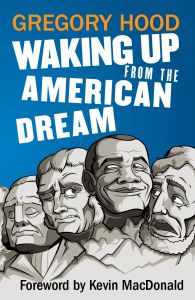
You can buy Greg Hood’s Waking Up From the American Dream here. [1]
The Clinton administration should be studied for several reasons. First, despite his many flaws, he had a wildly successful political career. Second, he is an example of how to get involved in overwhelming situations and end up those situations’ master. Third, his political enemies made several errors. The Republican Party and others were an example of doing the wrong thing with no self-correction.
Before getting too far into this biography, I must say it was brought home to me just how difficult it is to accurately tell the story of a President and the events of his time. As this article goes to print, President Clinton is still alive; likewise, many of his enemies also remain living. He was controversial throughout his career; his wife was even more controversial. Even the events of his presidency draw their own passionate supporters and detractors. As a result, I watched several documentaries about Clinton, read several books about the man, and then watched/read documentaries, books, articles, etc. about the affairs of his time, so I do feel that I’ve captured the essence of his presidency and the lessons we can learn from it.
Bill Clinton: The Traditional Southern Democrat, His Insane Asylum Political Party, & His Rise to the Presidency
Bill Clinton was from Hope, Arkansas. It is a town within the traditional Democratic Party stronghold of the rural South. Growing up, Clinton’s family life was dysfunctional, but Clinton himself was smart, ambitious, and charming. He was inspired by John F. Kennedy’s call to action and became interested in politics at a young age. All those around him felt he was destined to be president. One ambitious lawyer, Hillary Rodham of Illinois, left Washington D.C. to follow Clinton on his way to the top as his wife.
Clinton launched his political career with a doomed Congressional race in 1974. He got enough supporters following that run that he won the election to be the Arkansas Attorney General in 1976 and become governor in 1978. Two years later, he was defeated by a Republican cuckservative due to an overly ambitious plan that required an increase in vehicle taxes and a riot of Cuban refugees that the Carter administration dumped on Arkansas like toxic waste after the Mariel Boatlift of 1980. After the defeat, Clinton learned his lessons and re-tooled. His wife, Hillary, did the same; she ditched the feminist look, faked a Southern accent, and took on the image of a sophisticated Southern Belle. [1] [2]

The Mariel Boatlift problem: Bill Clinton’s political career was nearly ruined by Cuban rioting at Fort Chaffee, Arkansas. The event made him acutely conscious of the costs refugees imposed on their host communities.
Clinton became governor again in 1983 and remained so until he was elected US President in 1992. During his governorship, he positioned himself within the traditional support base of the Democratic Party — rural white Southern Protestants and Irish Catholics from the North. He figured out how to pepper his speeches with Bible verses, gain support from conservatives, and downplay the Democratic Party’s radical, anti-white base. His first brush with national fame nearly ended in disaster, though. At the 1988 Democratic Party Convention, he had to read a speech that Candidate Dukakis wanted to read, but the speech went on a bit too long. Clinton acted quickly and got a spot on The Johnny Carson Show to recover his cred shortly thereafter.
In 1992, his careful political positioning served him well and he went on to win the Presidency. However, the problems that cropped up in the 1992 campaign were systematic problems that dogged the Clinton administration the entire time. The first problem was the womanizing. [2] [3] It came up during the New Hampshire Primary and Hillary took the lead in heading off disaster. The second problem was that he won the general election with only 43% of the electorate. Clinton only won because Ross Perot, a billionaire that got into the race over trade issues, siphoned votes from George H.W. Bush. Clinton thus entered office with no real mandate, a shaky base of support, a large hostile group among the public, and a cynical mainstream press that highlighted every mistake he made.
Another problem that Clinton had was the non-white/insane asylum portion of the Democratic Party that he had to appease. The feminist portion of the madhouse was well represented in the First Lady. Hillary Clinton’s entire career perfectly captures the problems of leftist feminist dogma applied in the real world. Hillary’s true talent was keeping Bill away from scandal as he rose to the top. Otherwise, she really operated at the level of a capable, hardworking Congressional staffer; able to follow orders and run down problems, but lacking independent judgment. Feminism also requires male support, and Hillary got this through her husband’s accomplishments.
On the day of the inauguration, Hillary had a very public argument with the President over the placement of her office that lasted for hours and made national attention. She was unable to recognize how the fight made her appear to others. The office issue also represents another feminist problem — a fundamental misunderstanding of the male role, where symbols like who gets what office are seen as more important than what really matters — say the number of calls and from whom that go to the phone in a particular office, or how to use power to bend big ego men to one’s will.
Other defeats followed, and they were feminist-inspired. At his wife’s insistence, Clinton nominated Zoë Baird as US Attorney General, but she had employed illegal aliens and failed to get confirmed. He then nominated the mulatto Lani Guinier (at his wife’s instance) to be the Assistant Attorney General for Civil Rights, but her anti-white statements even turned off Democrats like Senator Ted Kennedy, so her nomination likewise ended in failure. Hillary could get Bill to nominate Strong Independent WomynTM, but didn’t have the Lyndon Baines Johnson’s ability to cajole Senators into supporting her choices. Hillary then became the leader of an effort to reform health care that nobody wanted. This too ended in disaster.
The insane asylum wing of the Democratic Party also dealt Clinton some big blows without Hillary’s involvement at all. Clinton wanted to focus on the economy after coming into office. At the time, the nation was mired in a terrible recession, but an off-hand remark about gays in the military shifted the public’s focus to homosexuality. It was a terrible mistake. Clinton made the remarks in the midst of the HIV/AIDS crisis. In 1993, it was not an irrational perception that to be gay was to also be infected with HIV and dying. The public, Congress, and the Pentagon reacted against this idea very strongly, while at the same time Clinton’s gay supporters demanded he stick to his pledge. The “don’t ask, don’t tell” compromise thus was a terrible defeat and embarrassment.
Other problems continued. The FBI mishandled the situation with the Branch Davidians in Waco in 1993, and Clinton’s evasions over the matter endeared him to nobody. In 1994, the Democrats lost Congress. It was a terrible blow for the Clinton administration, but Clinton was learning. Very shortly, Clinton’s strengths of seeing all sides to a complex problem as well as his remarkable ability to connect with people would come to the fore.
Clinton’s Times
The cultural times of Clinton must be addressed. Clinton lived in a time where communications technology, driven by things like the 24/7 News Cycle, expanding cable TV stations, and the internet changed everything. Older Americans were shocked when a person at an MTV sponsored meeting asked if Clinton wore boxers or briefs. They were even more shocked when Clinton answered (briefs). Younger voters liked this forthrightness, though, and Clinton proved he understood the differences between audiences watching CBS versus MTV.
TV also turned a corner into the realm of tawdry. Daytime talk shows of the time featured midget fights, confessions of adultery, paternity tests, fights between blacks and the KKK, and declarations of love from homosexual men to straight men.

TV in the Clinton Years: This awkward moment in 1995 on national TV led John Schmitz (right) to murder Scott Amedure (left). Schmitz was embarrassed when Amedure revealed he had a homosexual crush on him. The continuous tawdry scandals coming from Clinton’s private life fit into an existing cultural norm.
If the Clinton years had a musical theme, it was the Irish band U2. The band’s rise to superstardom paralleled Clinton’s rise to the presidency. While the band (and Clinton) was already established in the mid-Eighties, they produced a very mature and serious album, The Unforgettable Fire, in 1984, which contained their hit song “Bad.” In 1987, U2 released their magnum opus, The Joshua Tree. A year later they followed up on this hit with the movie Rattle and Hum. In 1991, they released Achtung Baby. [3] [4]
Achtung Baby perfectly expressed the changes ongoing in Europe at the time. The music therein is a masterwork of harmony, melody, and poetic themes. While the song “One” obviously expresses a painful break-up or divorce (like that of the Soviet Union), it can also be interpreted to be referring to the reunification of Germany. For example:
Well it’s too late
Tonight
To drag the past out
Into the light
We’re one
But we’re not the same. . .
U2’s Zoo TV Tour during the election of 1992 was a pro-Clinton advertisement. U2’s songs rode the airwaves alongside Clinton’s speeches during his first term. Although not as good as the earlier albums, Zooropa (1993) did express the discord one might feel from the ongoing communication revolution at the time. When the war in Bosnia moved to its full-blown bloodbath phase in 1995, the band produced the song “Miss Sarajevo.” In 1997, U2 released the album Pop, which had a far more cynical song, “Staring at the Sun,” that perhaps can be interpreted as disappointment with the direction of politics during Clinton’s sordid second term.
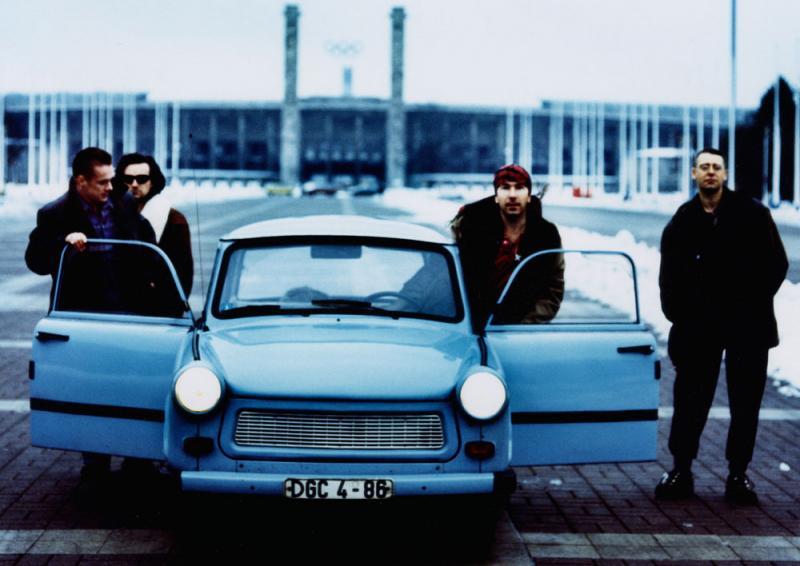
Great art reflects current events: The use of the East German-manufactured Trabant in the Achtung Baby and following Zoo TV Tour was a perfect artistic representation of the key event then ongoing in Europe — the reunification of Germany.
The most critical part of Clinton’s presidency was the generational shift. In 1992, the World War II generation was dying off or retiring. Boomers were slowly taking over. There were tumultuous changes, like a series of spring storms, due to this situation. In Clinton’s time, the World War II people weren’t entirely gone and their influence remained enormous, so Boomers remained stuck carrying out policies based on the supposed “lessons” of that conflict. An isolationist America First foreign policy was impossible for any politician to consider or support. The instant violence erupted in some far-off latrine pit nation, there were calls for action that proved very difficult to resist.
The end of the Cold War made atomic war with the Soviets unthinkable, but war itself didn’t end. In fact, the international environment became more unstable, dangerous, and complex, and Clinton had to navigate situations where “everyone knew” you can’t “appease” a “dictator” like “Chamberlain” at “Munich.”
Clinton: Wartime Leader
As mentioned above, due to the end of the Cold War, the threat of big war went away, but small wars cropped up in ways that initially did not fit into a clear pattern. With the perspective of time, Clinton’s wars can now be parsed in three different bins. The first is foreign wars in the non-white world, the second is foreign wars in the white world, and finally, the sub-lethal domestic American intifada which empowered the Republicans. This right-wing intifada did some good, but also much evil.
War with the Non-White, African, World
When Clinton entered office, his first crisis was that of Haitian refugees. In 1993, Haiti was ruled in an unwise way by a military junta. Many Haitians were taking to boats for the US mainland. The Clinton administration realized that Haitian refugees could very well end up flooding the entire US Gulf Coast and spread havoc.
Again, the World War II generation wasn’t helping America with the Haiti situation. The metapolitical concepts and laws related to refugees in the 1990s were still influenced by the immediate post-war situation in Central Europe. Then, refugees were anti-communists from Pomerania or Poland who were tool and die makers on the low end and rocket scientists on the high end of skill sets. With Haitians, the best one could get was a docile family, possibly infected with HIV, permanently on the bread lines, or at worst, a family with an “aspiring rapper” living the thug life.
Clinton responded to the crisis with a series of flip flops. Initially, he called the refugees “political” then re-classed them “economic” refugees when he realized the true situation. In doing this, Clinton was establishing concepts that hitherto didn’t exist for a new situation. After a number of embarrassments, setbacks, and weeping Negro hunger strikers, Clinton eventually managed the Haitian refugee crisis in the following way:
- He sent the Coast Guard to turn back or capture Haitian refugees (reclassified as illegal immigrants).
- Refugees were housed in Guantanamo Bay, Cuba, where they were not a problem to any local governors and not under Constitutional protections. He sent soldiers to Cuba to deal with any issues the Haitians might cause. There were a great many riots and unpleasantness in Gitmo due to the Haitians, but the press didn’t notice, so it didn’t matter.
- He supported a new Haitian leader, Jean-Bertrand Aristide, and backed his bid to power with overwhelming force. Paratroopers were on the way to Haiti when the military junta backed down. Clinton won the war with Haiti without a shot fired. [4] [5]
- When the junta backed down, he sent an occupation force to further calm the situation down and sent Haitians to train as police and military in the US.
Haiti remains a latrine pit nation, but there is no major Haitian community fueled with welfare dollars and backed by naïve, but nice white Lutheran schoolmarms in any community in the United States outside of Miami.

You can buy Greg Johnson’s The White Nationalist Manifesto here [6]
Regarding Somalia, the problems remain ongoing. Part of the problem was that Clinton ascended office assuming that those in the military and foreign policy establishment were smarter than they actually were. In what I’ve come to believe was a deliberately spiteful act after losing the election in 1992, President George H. W. Bush sent US troops to Somalia on a “humanitarian mission.”
Under Clinton, the number of deployed Americans troops to Somalia became greatly reduced, but the UN command under which they fell increased its ambitions and they got involved in the local politics. A raid to capture several lieutenants of a warlord turned into a disaster and the image of an American body dragged through the streets infuriated the public. Due to the sudden renewed public interest in isolationism as a result, the Clinton administration did not intervene in Rwanda when one group of blacks killed another.
If there is an overall lesson to this, it is that there is no reason to carry out humanitarian operations as such in Africa or any other part of the Negro world. The situation there is a manifestation of the capabilities of the Negro race; to intervene is to make things worse for a number of reasons. The only reason to intervene is to keep Africans out of white areas.
War in the White World
The “Troubles” in Northern Ireland started in 1966. That year, the people of the Emerald Isle held two different fifty-year commemorations. The first was celebrated by Irish Catholics and Republicans. They remembered the Easter Rebellion of 1916. The story of the rebellion was brought to life by a TV miniseries called Insurrection [7]. Meanwhile, across Northern Ireland, Protestants and Unionists held fifty-year commemorations of the 1916 Battle of the Somme. The two events were interpreted differently by Ireland’s religious communities. With the ghosts of the past walking around, a clash in Northern Ireland between Catholics and police in 1968 led to years of sectarian war.
American politicians did occasionally comment or express concern on the matter, but few really wanted to get involved in the Ulster tar pit. However, Clinton’s sensitive political antenna recognized that a peace settlement was possible. Clinton allowed Sinn Fein leader Gerry Adams to travel to the United States for talks. He lent his weight to the efforts of the various peace coalitions in Northern Ireland. When Clinton finally went to Northern Ireland in 1995, he was well received. Northern Ireland’s violence lessoned thereafter.
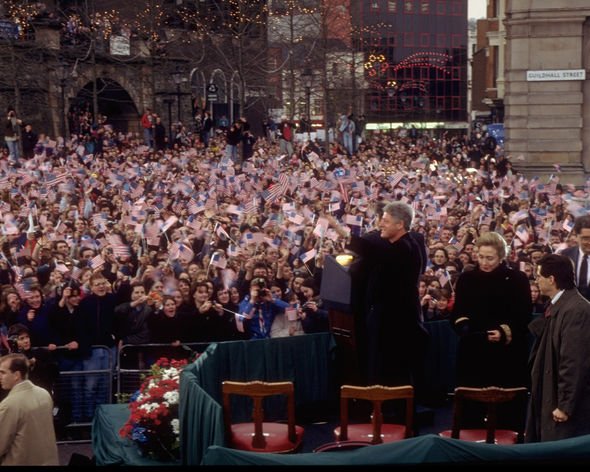
President Clinton was well received in Northern Ireland.
Yugoslavia
However, events in Yugoslavia turned out to be much more difficult to manage than those in Northern Ireland. The impulse that led to Yugoslavia’s creation after World War I grew out of the Romantic ideas of the late nineteenth century. Then, Pan-Slavists believed that those speaking the Serbo-Croatian language should unite politically and do great things — such as what happened in Germany. Unfortunately, there was more required to unite the Serbs and Croatians, and Yugoslavia quickly became internally unstable. During World War II, the Croatians openly sided with the Axis powers against the Serbs and there was a vicious Croat-Serb war. At the end of World War II, Communist “Partisans” controlled the country; things appeared rosy, all related to the Second World War seemed to be forgiven, and the Yugoslavian government traveled a middle way between the Capitalist West and the Soviet East. Many liberals felt that Yugoslavia was the model for the future.

Serbs and Croats speak the same language: Yugoslavia was the dream of Romantic pan-Slavic nationalists in the late Nineteenth Century. It turned out that Slavic blood did not trump the divergent cultural histories of the Croats and Serbs.
In a way, the liberals were right, but not in a way that they probably hoped. Yugoslavia turned out to be an example of the failure of multi-ethnic polities, and more ominously, a manifestation of a new concept, The Clash of Civilizations. The first problem was that of ethnicity. Yugoslavia was not a nation, it was a polity, an artificial proposition nation that could hold together as long as the population believed The Proposition, which from 1945 until 1987 was the idea of international Communism. When the Partisans started to die off and Communism proved to be a failure, the ethnic tensions resumed.

Vibrant and diverse: The location of ethnic groups in Yugoslavia in 1991.
The more serious problem, though, was Yugoslavia’s role in The Clash of Civilizations. After the Cold War ended, the concept was put forward (and initially met with great ridicule) by Samuel Huntington in a lecture in 1992. The lecture grew into an article in 1993 and a book in 1996. Huntington argued that the end of the Cold War divided the world along new axes of identities. According to this scheme, Orientals like South Koreans would see themselves less as allies of the Americans, and more allies of the Chinese and brothers to the North Koreans.
Nations like Germany that had no civilizational fault lines within them remained stable in the new environment, but Yugoslavia was host to three different fault lines. The Slovenian and Croatian ethnicities were Western. They were Roman Catholic and Germanophile. They were more Western than merely looking to Vienna for cultural cues, too. Croatian priests often embraced a Puritanism that any Connecticut Yankee would recognize. For example, Robert Kaplan calls the Archbishop of Zagreb during World War II, Alojzije Stepinac (1898–1960), “Cromwellian.” Like England’s Lord Protector, Archbishop Stepinac encouraged private self-discipline and public nationalism. [5] [8] Slovenia, in particular, was the most Germanic. It was industrial and orderly. The Serbs, Montenegrins, and Macedonians were from the Orthodox civilization — they were the heirs of the Byzantines. In Bosnia, there were a group of Serbian and Croatian converts to Islam, and in Kosovo, the Serbian population had been demographically swamped by Muslim Albanians.

Civilizational fault lines met in Yugoslavia; the Serbs found supporters in the Orthodox Russians and Greeks. The Muslims in Bosnia called in supporters from Islamic Turkey, Saudi Arabia, etc. The Croatians had support in Western Europe — especially from Bavaria and Italy.
Yugoslavia’s breakup started in the 1980s. The event that hastened Yugoslavia’s end was in Kosovo. There, in 1987, a Communist official named Slobodan Milošević (1941–2006) held a town hall meeting where Kosovo Serbians explained that they were fed up with Albanian criminality and misrule. The results of the town hall became nationally televised. Serbian ethnic grievances in Kosovo became the central national issue and other nations reacted with their own rising nationalisms.
From 1987 until 1990, Yugoslavia’s demise was carried out through constitutionally-sanctioned meetings that were held in clean, well-lit conferences where motions were seconded and carried and nobody raised their voices in anger. In 1990, the wealthiest of the Yugoslavian sub nations, Slovenia, separated first. Then Croatia left Yugoslavia. Germany and Austria unilaterally recognized independent Slovenia and Croatia. After 1990, bullets started to fly and blood started to flow.

Left: Greek militia at Srebrenica. Right: Bosnian Muslim fighters. It is estimated 500 Mohammedans from Afghanistan and the Middle East went to Bosnia to fight.
There is no definitive history of the following Yugoslavian Wars. Narratives of that conflict tend to be first draft histories written as events unfolded. They have no perspective of distance or dispassion. Probably the worst thing about any history of the Yugoslav Wars is the obvious anti-Serbian bias. For example, in TV documentaries, Serbian militiamen are referred to as “nationalist thugs” rather than what they really were — citizens defending their homes and families. In documentaries about Yugoslavia produced at the time of the conflict, the background music when the Serbians are shown is “bad guy” music but when Muslim victims are shown the music is “sad, innocent people” types of melodies.

Serbs in Croatia: Part of what made the conflict in the former Yugoslavia so ugly was the fact that outside nations recognized the former Yugoslavia’s internal administrative boundaries. As a result, many Serbs lived outside Serbia.
Clinton initially wanted to get involved in Yugoslavia, and the professional Holocaust Survivor, Eli Wiesel, publically encouraged Clinton to do just so at a very awkward dedication ceremony. The internationalist journalist types compared Serbs to Nazis and demanded a military commitment in nearly every editorial. However, Clinton’s ability to see many sides of the issue gave him pause. After he read the book Balkan Ghosts (1993) he came to realize that there was no real easy way to handle matters.
Basically, over many months, Clinton handled the Yugoslav Wars by ignoring Croatian war crimes against Serbs and Muslims and highlighting Serbian atrocities in the information war, carefully managing the arms embargo, and then striking at the right time.
Samuel Huntington saw several things in Clinton’s handling of the conflict that must be addressed, though. Obviously, Clinton supported fellow Westerners, but Huntington was uncertain of why Clinton supported Muslim Bosnians. He speculated such was coldly rational realpolitik by Clinton to keep American alliances with Islamic Turkey and Saudi Arabia. But there was a problem. Huntington writes:
By refusing to recognize the war for what it was, [i.e. a Clash of Civilizations] the American government alienated its allies, prolonged the fighting, and helped to create in the Balkans a Muslim state heavily influenced by Iran. In the end, the Bosnians felt deep bitterness toward the United States, which had talked grandly but delivered little, and profound gratitude toward their Muslim kin, who had come through with the money and weapons necessary for them to survive and score military victories. “Bosnia is our Spain,” observed Bernard-Henri Levy, and a Saudi editor agreed: “The war in Bosnia and Herzegovina has become the emotional equivalent of the fight against fascism in the Spanish Civil War. Those who died there are regarded as martyrs who tried to save their fellow Muslims.” The comparison is apt. In an age of civilizations, Bosnia is everyone’s Spain. The Spanish Civil War was a war between political systems and ideologies, the Bosnian War a war between civilizations and religions.” [6] [9]
By 1995, Clinton was able to play his strongest hand — NATO’s excellent air forces — to force the different parties to a peace conference at an Air Force base in Dayton, Ohio. The peace agreement ended up working for several reasons: by 1995, Bosnia was effectively an area containing homogenous ethnostates, the Serbs and the Bosnian Serbs were divided over how to further proceed, and Clinton used a military force which the Serbs had no counter to.
In 1997, a short, vicious civil war in Albania led to a series of events that became a war in Kosovo in 1999. Clinton intervened on the side of the Albanian Muslims. There was a sort of path-of-least resistance to this endeavor. The Yugoslav Wars finished as a result, but I’ve never met a veteran of the Kosovo Campaign that understood why the United States sided with the Albanians.
I believe part of Clinton’s support for the Muslims of the former Yugoslavia is a result of the non-white/insane asylum part of the Democratic Party to which Clinton belonged. Islam has two things to it that appeal to the Democrat’s nut-house. The first is that Islam is easily identifiable as a hostile, alien force. It is natural that non-whites, deeply alienated from the white American mainstream, will sympathize with them. Second, Islam has a psycho-sexual allure that appeals to non-whites. Frizzy haired mulattoes (like Lani Guinier) get in Islam a society where they can cover their hair rather than compete with blonde beauties. Meanwhile, non-white men can gain women as war booty. Finally, since Islamic societies are always backwards in some way, white savior types can support Islam as a way to “get back” at those they feel resentment for.
Clinton’s Most Serious War: The American Cultural Clash
Clinton was genuinely a centrist politician from the South who wanted people to like him, but he ended up ruling a polarized nation with a right-wing insurgency that ran along a spectrum of actual bombings and shootouts to well-groomed Republican Congressmen embarking on an ill-conceived crusade for “pro-growth policies.” While there was much to admire in the political Right at the time, this article will focus on the problems of the political Right in the Clinton years.
The roots of the cultural clash in the 1990s were the two social revolutions of the 1960s. The first was an Afro-Jacobin revolt in the early 1960s commonly called the “civil rights” movement, and the second was a spiritual revolution led by the (then young) Boomers. Of the two revolutions, the “civil rights” revolution was the more damaging. It created an illicit second constitution in the 1964 Civil Rights Act and allowed Third World immigration. Because of “civil rights,” a great many of America’s cities were no-go areas by the time Clinton was first elected.
Tragically, the “civil rights” revolution became a cultural sacred cow across the political spectrum. No politician could say that the Reverend Doctor Martin Luther King Jr. had misled America and Africans were only wrecking things. As a result, American society polarized around proxies. “Civil rights” advanced by legislative judges, so whites reacted by finding anti-abortion judges that might be anti-“civil rights.” Rural and suburban whites purchased guns to protect themselves from black crime, while city-dwelling whites endorsed gun control to keep blacks from using guns to commit crime. Whites became frustrated with the government policy of desegregation, but ended up becoming “anti-government” activists instead.
The first big mistake any on the political Right made was in the person of Timothy McVeigh. He was a genuine hero in the Gulf War, but when he returned home from the army to deindustrialized upstate New York, there was no job, no potential wife, and plenty of anti-government metapolitical literature. He started to drift around, increasingly disconnected, and increasingly radical.
McVeigh vowed revenge following the FBI’s incompetence at Waco. Two years to the day of the end of the Waco fiasco, McVeigh blew up the Federal Building in downtown Oklahoma City. The day before the terror attack, President Clinton was answering sharp questions from reporters about his relevancy. Clinton was on the way to being a one-term Democrat. McVeigh’s bombing of mid-grade government employees in the Midwest turned it all around. McVeigh gave Clinton power.
Clinton’s actions at the memorial service for the victims was nothing short of genius. He went to the arena at the Oklahoma State Fair Grounds and met a somber, weeping audience. Aides later said they were amazed by his ability to connect to and empathize with so many people. His Oklahoma speech [10] was a spellbinding display of healing. Soon thereafter, Clinton could argue that what McVeigh was saying and what his political enemies were saying was not much different.
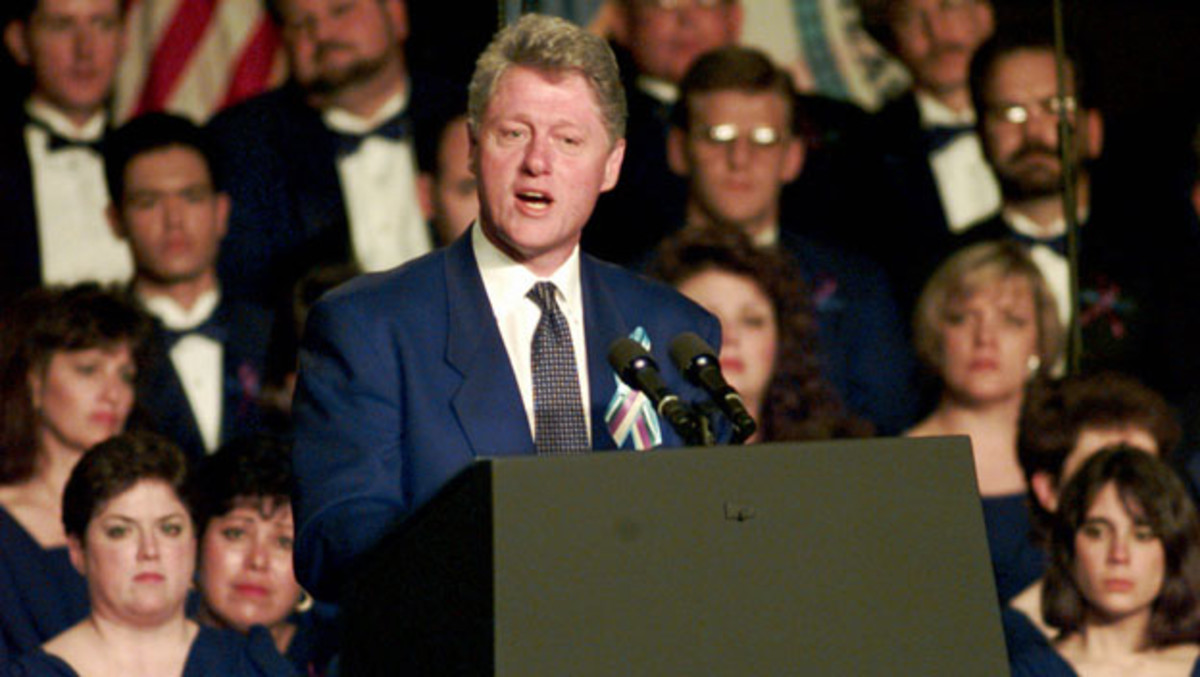
Clinton’s speech after the Oklahoma City bombing was a masterful example of rhetoric. This picture perfectly captures Clinton’s ability to empathize with the grief of the mourners.
As Clinton spoke in Oklahoma, his ability to see all sides of an issue had worked well in two other areas. First, Clinton had created a budget that brought down the Federal government’s deficit. It created a series of positive economic results. Second, Clinton had signed a sweeping crime bill in 1994 and an assault rifle ban. Although it was not apparent at the time, the latter two laws got Africans disarmed and in prison. The American economy is actually harmed by the presence of blacks due to their propensity for criminal behavior, so clearing the problems of “civil rights” away turned out to be a money-making proposition. Meanwhile, the Republican Congress led by Congressman Newt Gingrich of Georgia shut down the government over wonkish policy matters.
Clinton also read Peter Brimelow’s book Alien Nation. He sponsored a rather wise immigration reform effort that basically went nowhere due to the cheap labor wing of the GOP and the distraction of a white man having blown up a building. This is the second problem that Clinton’s right-wing enemies had. By being colorblind and economically focused, they had no counter to Clinton’s economic successes. Their attacks on Clinton became mean spirited and weightless.
The American Cultural Clash: Impeachment and Islam
Americans don’t think much about the world outside the shores of their continent, but in the rest of the world, America is a colossus that affects everything — and many people out there don’t like America. It is well known that Clinton’s sexually reckless behavior with an intern turned into a scandal that led to Clinton being impeached. Less discussed is that under the cover of this sordid affair, violent men from an Islamic sect called Salafi Jihadism increased their attacks on the United States.
Again, Clinton’s enemies were doing the wrong thing. Timothy McVeigh and the 1996 Olympic bomber Eric Rudolph’s crusades were aberrations — not normal behavior of white men, but their high profile escapades clouded recognizing a clear pattern of escalating Islamic violence. The focus on Clinton’s moral lapse also clouded what should have been a national conversation on immigration, Islam, and terrorism. The victims choking on smoke at the World Trade Center on 9/11 were as much the victims of Clinton’s Special Prosecutor as they were of al-Qaeda.
With that in mind, Special Prosecutors should be appointed after a vote by both Houses of Congress, have a scope, a limited budget, and a time limit.
The American Cultural Clash: Unfinished Business
The smoke-engulfed victims on 9/11 were also victims of the shift that the FBI made from being a law enforcement agency under J. Edgar Hoover to a semi-competent Praetorian Guard following Hoover’s death. During Clinton’s tenure, the laws and regulations regarding the FBI assumed that the agency was acting honestly rather than being a political player in its own right. As a result, FBI directors were appointed by the President, but couldn’t be fired without a “just cause.”
Clinton appointed Louis J. Freeh to be head of the Bureau. It turned out that Freeh was a Clinton-hater, and he wasted a great deal of time investigating Clinton for his own political ends. Meanwhile, Freeh ignored the growing Islamic terrorist threat, failed to upgrade the FBI to meet the challenges of the digital age, and continued the general culture of entitled mediocracy that helped bring about Waco in the first place.
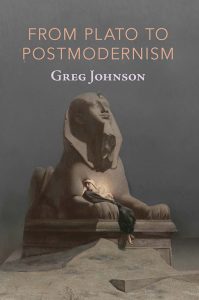
You can buy Greg Johnson’s From Plato to Postmodernism here [11]
Clinton’s FBI problems were not so much a reflection on Clinton, but a reflection on the FBI itself. FBI directors need to be fired or replaced on the first day of any new presidential administration. They must be held accountable to the elected political system. The FBI’s use of “process crimes” (i.e. “lying” to an FBI agent) that turned Monica Lewinsky into a witness against Clinton is also a problem. The FBI can use “process crimes” to imprison people for genuine differences in political policy, such as happened in the case of General Michael Flynn. Indeed, it might be time to break apart the FBI — moving its departments to other government agencies and shutting down some departments entirely.
Bill Clinton, and indeed every new president, should move quickly to ensure that they don’t leave in place problems for a future generation whenever they can. For example, Bill Clinton should have considered reducing and then eliminating the No-Fly Zone in Iraq, especially as he started his second administration. By failing to do this, he kept tensions with Iraq high enough that a group of Israel First zealots stampeded America into war and turned Iraq into a land where cruelty rang from river to river.
Likewise, America’s alliances also need to be re-evaluated. Those in the Clinton Administration often look back at the nuclear crisis with North Korea with a great degree of pride. In their minds, they were faced with a problem not much different from JFK’s issue with Soviet missiles in Cuba and came out ahead, but this was not really the case. Huntington writes:
In 1993 and 1994 the United States worked itself up into a crisis state of mind over the prospect of North Korean nuclear weapons. In November 1993, President Clinton flatly stated, “North Korea cannot be allowed to develop a nuclear bomb. We have to be very firm about it.” Senators, Representatives, and former officials of the Bush administration discussed the possible need for a preemptive attack on North Korean nuclear facilities, U.S. concern over the North Korean program was rooted in considerable measure in its concern with global proliferation; not only would such capability constrain and complicate possible U.S. actions in East Asia, but if North Korea sold its technology and/or weapons it could have comparable effects for the United States in South Asia and the Middle East. South Korea, on the other hand, viewed the bomb in relation to its regional interests. Many South Koreans saw a North Korean bomb as a Korean bomb, one which would never be used against other Koreans but could be used to defend Korean independence and interests against Japan and other potential threats. South Korean civilian officials and military officers explicitly looked forward to a united Korea having that capability. South Korean interests were well served: North Korea would suffer the expense and international obloquy of developing the bomb; South Korea would eventually inherit it; the combination of northern nuclear weapons and southern industrial prowess would enable a unified Korea to assume its appropriate role as a major actor on the East Asian scene. As a result, marked differences existed in the extent to which Washington saw a major crisis existing on the Korean peninsula in 1994 and the absence of any significant sense of crisis in Seoul, creating a “panic gap” between the two capitals. One of the “oddities of the North Korean nuclear standoff, from its start several years ago,” one journalist observed at the height of the “crisis” in June 1994, “is that the sense of crisis increases the farther one is from Korea.” [7] [12]
Clinton also apologized — too much. He apologized to Korea for an alleged “shooting refugees” incident that was probably an embellishment. This led to a major uptick in anti-Americanism in South Korea. He also apologized to Native Hawaiians, causing a resurgence in Native Hawaiian hostility and activism.
Quo Vadis: Clinton, Gingrich, or McVeigh
Those of us concerned about white well-being have several options. We can be like McVeigh, so enraged by injustice that we become unjust ourselves. We can be like Newt Gingrich, competent, but trapped by ideology and tripped by personal vices — like divorcing a wife during treatment for cancer. Or we seek to cultivate in ourselves the same strengths Clinton had — empathy for others, seeing all sides of an issue, and getting up every day, despite all around you being insane with rage, and doing the best you can do.
If you want to support our work, please send us a donation by going to our Entropy page [13] and selecting “send paid chat.” Entropy allows you to donate any amount from $3 and up. All comments will be read and discussed in the next episode of Counter-Currents Radio, which airs every Friday.
Notes
[1] [14] Hillary Rodham’s ancestry was mostly English with some French Canadian. Most of her ancestors came from Pennsylvania — a Union State. It was not a total show-stopper in Arkansas, but it was a problem that needed to be managed by the Clintons.
[2] [15] Clinton hadn’t run in 1988 due to the potential for his mistresses to talk. This wasn’t a bad move; Colorado Governor Gary Hart was destroyed that year when the press uncovered an affair he was having.
[3] [16] I believe Achtung Baby is U2’s best and most serious work.
[4] [17] The Haitian government’s intelligence services relayed in real time the start of the airlift that was to bring American paratroopers to Haiti.
[5] [18] Kaplan, Robert D. Balkan Ghosts: A Journey Through History, St. Martin’s Press, New York, 1993, p. 11.
[6] [19] Huntington, Samuel, The Clash of Civilizations and the Remaking of World Order, Simon & Schuster, New York, 1996, p. 290.
[7] [20] Ibid, pp 190-91.